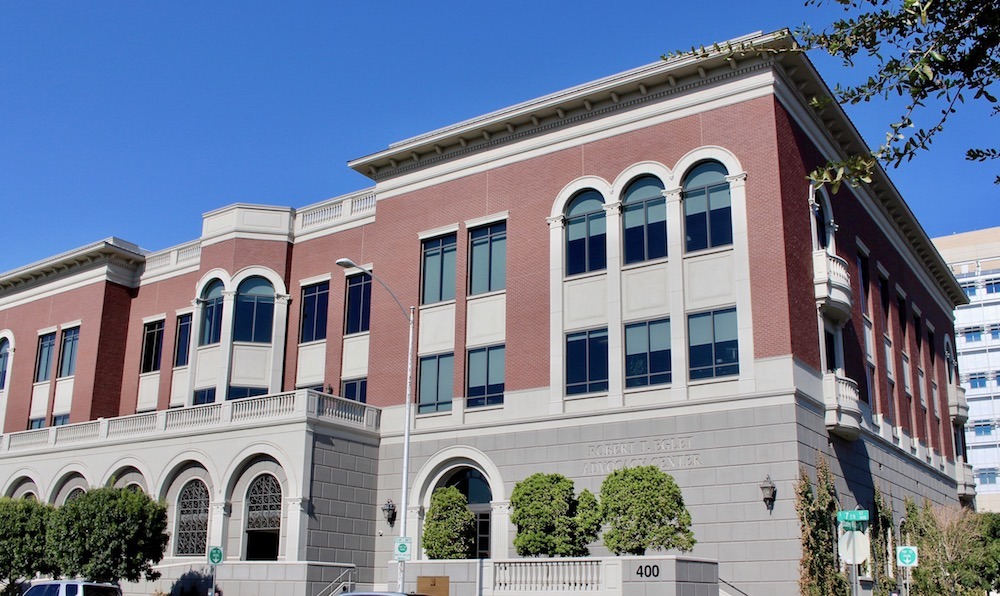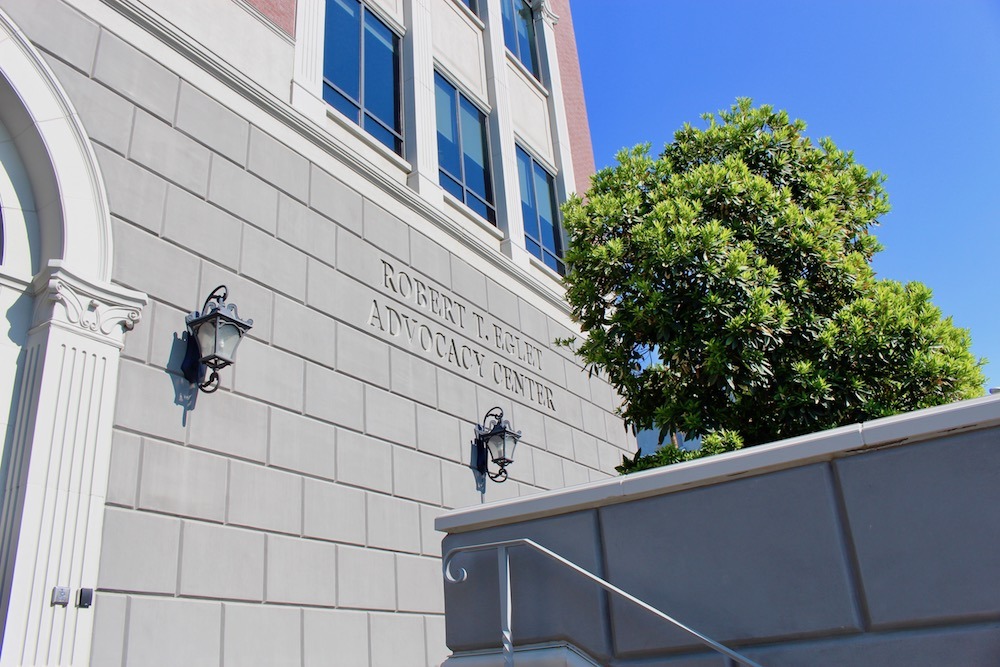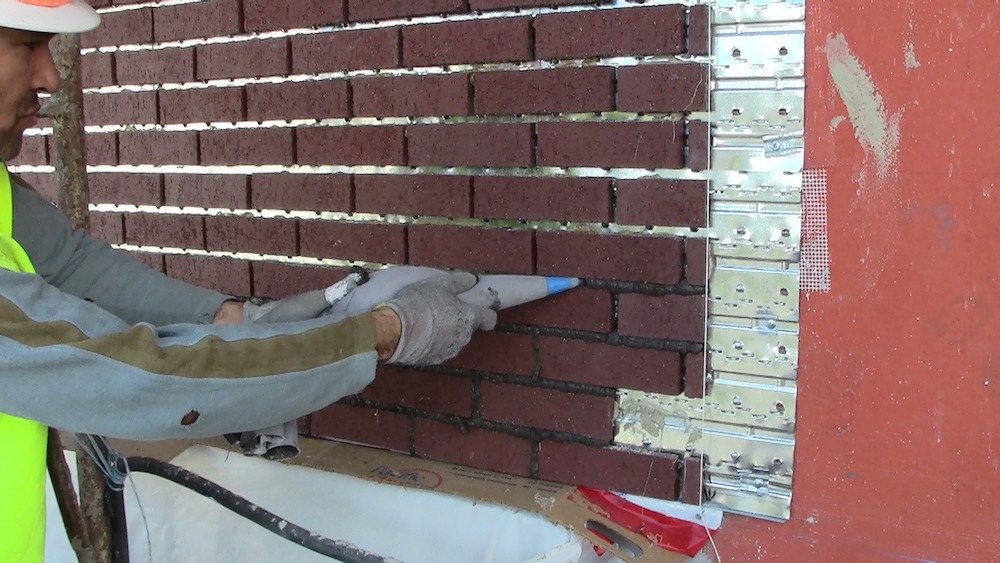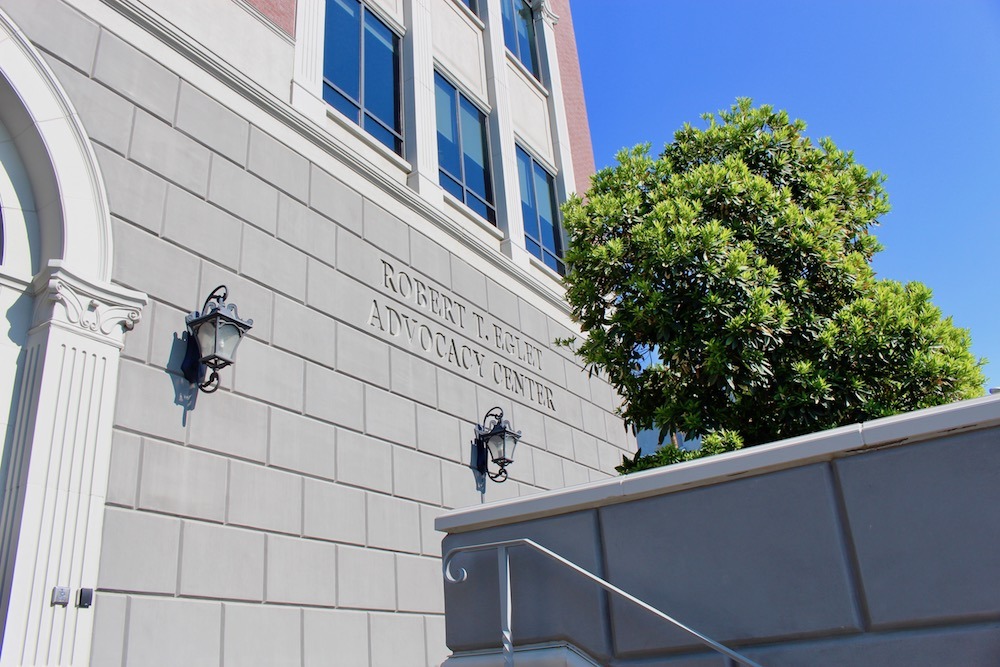Situated in downtown Las Vegas, Nevada is the federal-period influenced Robert T. Eglet Advocacy Center. The three-story structure houses more than 47,600 square feet of office space, a third-level exterior event terrace with great city views, and an underground parking structure for 100+ vehicles. The structure features an exterior cladding of veneered brick and Gypsum reinforced concrete work.
DesignCell served as the architecture firm for the project. The architectural style created by DesignCell reflects the desire to create a historic American building appearance. The elevated building entrance with a prominent grand stair and entry-level plaza provide visitors with an experience similar to entering a historic municipal structure. The building elevations are clad with clay brick and pre-cast fiber reinforced concrete forms.
The interior design followed the request for the French Renaissance style that includes numerous decorative elements and finishes throughout the public and private spaces. Highly ornate ceilings and suspended crystal chandeliers are not common in today’s modern business environments. These items bring to mind the building’s prominence and the importance of law.
The top office levels are connected with an open staircase that links the resources of several firms. The interior space also includes multiple conference rooms, a full size mock-courtroom for pre-trial practice and academic community use, and an exercise room for employees. There’s also an underground parking structure is conveniently accessible through the main lobby and building elevators.
Energy efficiency and user comfort were prime considerations in the design of this building. The design team incorporated numerous modern technological features, such as exterior window shading, solar water heating, electric car charging, etc., all well hidden within the historic building style.
Hirschi Masonry based in Las Vegas, served as the subcontractor for the structural masonry, thin brick veneer and GFRC accounts on the project from June 2013 to February 2014.
Hirschi utilized different masonry systems for this building. The first was the structural CMU masonry that was utilized for the stairway and elevator shaft walls as well as several partitions in the parking structure. Architectural GFRC (glass fiber reinforced concrete) was used extensively on the exterior of the building. It was used for the base around the entire building, for the columns and surrounding windows on the first floor, and for all of the balcony balustrades. The GFRC on this project was supplied by Concrete Designs, Inc.
Lastly is the architectural thin brick found on the exterior of the building. This thin brick was installed using the LOXON metal alignment and locking panels system. This was Hirschi’s first project using a thin brick over metal panels and required installer certification with LOXON. The system required crews to step outside their normal brick installation routine and try something new. The biggest challenge for the crew was to learn the install of the metal panels. The panels must be installed using many of the principles that go in to laying brick in regard to creating level lines that bond well around the building. After a short learning curve, the crew grew efficient at installing the panels and laying the brick. The process became quite fast.
The crew was hesitant about the LOXON panel system in the beginning. Within a couple days of installation, they were advocates for the process. As Hirschi began the panel installation the plan was to use laborers to install the metal paneling and then to chase the metal installers with our brick masons setting the brick. After working the system a bit the team realized this plan was not the most effective. It was most effective to have the most experienced guys in charge of the panel installation. It is vital that the panels are installed flat, square, and plumb. Once the panels are up, laborers or hod-carriers can lay the thin brick. Since the panels have tabs for the brick to rest on and the level work is already done, the brick can be laid very fast. It laid up so fast that grouting in the joints became the most time-consuming part of the install. The team even rounded up a couple different mortar pumps to demo and speed up the process. The brick itself was a burgundy modular thin brick manufactured by Pacific Clay.
As with any project this project had a few challenges, the first was the space around the site. Since this is in a downtown area, navigating equipment around the 0.65 acre site was difficult. Another lesson learned was the importance of strict quality control on the thin brick as it is comes out of the box. Since there is not a mortar bed when installing thin brick over the metal panel system, the masons are very limited in their ability to adjust the veneer pieces to get a flat and level product. All pieces must be very flat and uniform coming out of the box. Any inconsistencies become easily noticeable when installed over the metal backing.
Just like any GFRC product, Hirschi worked hard to find installation techniques that would limit or even eliminate the penetrations that went through the product. Concrete Designs, Inc. was very helpful in this process. The teams discussed each piece and coordinated the installation. It was tremendously important that Hirschi had shop drawings early in the project. This enabled them to meet with the framers to ensure that arched openings and windows were framed properly to accommodate the sizes and shapes of the GFRC.
“It was a pleasure working on this project. We just don’t see many buildings done with brick in Las Vegas so we were excited when we saw these plans and even more excited when Korte chose us to work on this project”, said Karl Schauerhamer, project manager at Hirschi Masonry.
In March 2014, the ribbon was cut signifying the grand opening of the center. As a landmark in the ever-changing downtown area, the Robert T. Eglet Advocacy Center serves as monumental shift for future development in downtown Las Vegas.



